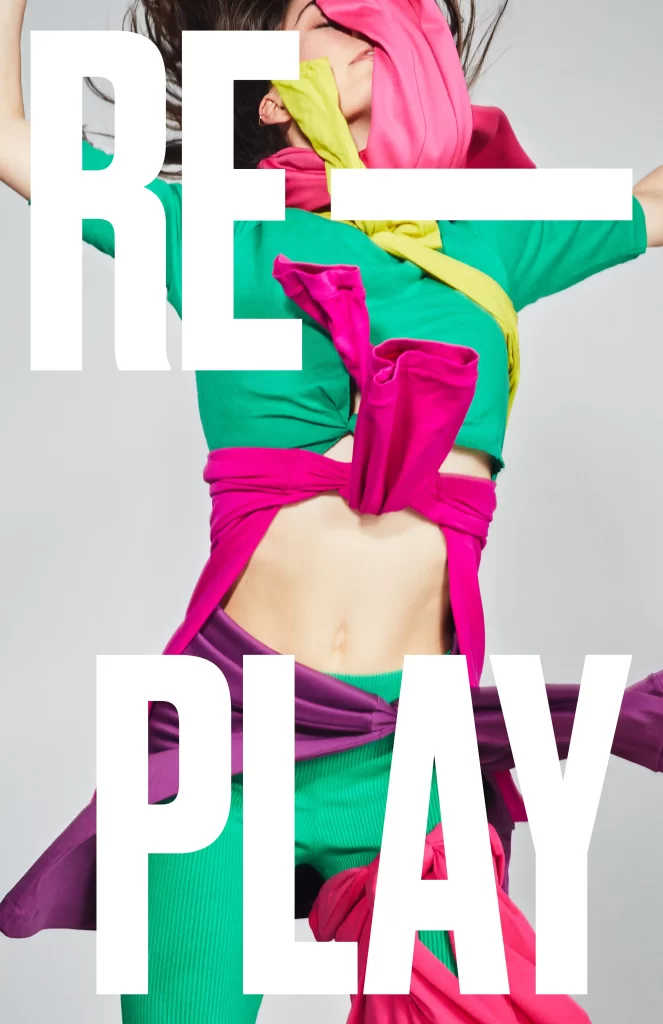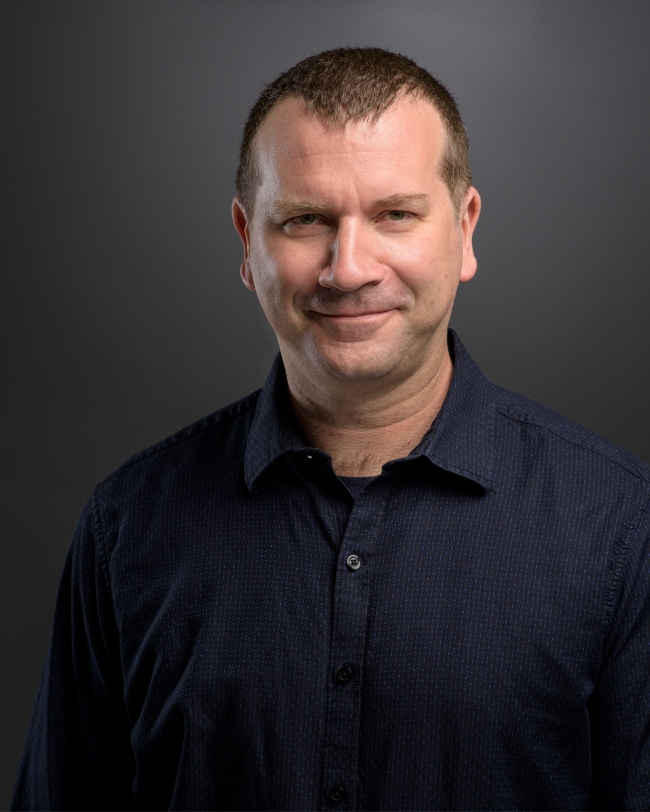Ririe-Woodbury Dance Company’s 61st season will open with Re-Play this week, featuring two world premieres and a reprise of a 2022 dance theater piece that was tapped as one of The Utah Review’s Top 10 Moments of the Utah Enlightenment that year.
The production features the first regular season performance of two new company dancers — Luke Dakota Zender and Nick Elizondo — who join the four returning from the previous season: Megan McCarthy, Fausto Rivera, Sasha Rydlizky and Miche’ Smith. One of the world premieres also will feature 28 student dancers from six Utah universities.
One of the two world premieres for Re-Play is Monica Bill Barnes’ It’s Great to Be Here — a marvelous title, for several reasons. In an interview with The Utah Review, Barnes, whose New York City dance company was founded 27 years ago, says the work is shaped as an uplifting celebration for the dancers and the audience. After maneuvering through the pandemic which imposed all sorts of limitations, including partnering and creating movement in close ensembles, dancers have returned to the full range of movement vocabulary possibilities. Barnes also throws in bits of comedy, gesture work and moments for individual personalities to shine, which will delight audiences.
The work’s title also is perfect for a world premiere in Salt Lake City, by acknowledging the rich and far-reaching roots of Utah’s historically acclaimed dance culture. In addition to the six Ririe-Woodbury dancers, 28 others will join the work on stage, representing Utah Valley University, Brigham Young University, Weber State University, Southern Utah University, University of Utah and Westminster University.
Barnes, who has known Daniel Charon, Ririe-Woodbury’s artistic director since his days in New York City, said, “I have always wanted to work together to make this happen in Salt Lake City.”
In developing the work, Barnes cast aside her initial intentions and went a bit of different path to capture the precise uplifting vibe of the piece she envisioned. Because of schedule demands in New York City, Barnes sent her notes and movement phrase ideas to Salt Lake City, along with Flannery Gregg, the Barnes company rehearsal director. The work’s original title was Wish You Were Here and Barnes had intended to use songs from the Talking Heads and The Supremes for the score. Reiterating the point she made in her accompanying program notes, Barnes credits Gregg for her role in rearranging the work, which now has a new title and plays to the nonverbal comedy possibilities.
Barnes also swapped out the original musical selections and has come up with a counterpoint that has an exciting potential. The first sections of the work feature two familiar Bach pieces: Gavotte from the Cello Suite No. 6 in D Major, BWV 1012, in a famous recording by Mstislav Rostropovich and the Sarabande from Partita No. 1 in B-Flat Major, BWV, recorded by Nils Anders Mortensen. Barnes then takes a surprising turn that is counterintuitive but astute for the precise effect suggested in her creative brief: David Bowie.s Let’s Dance and Under Pressure, for, the epic collaboration of Bowie and Queen.
Barnes explained that she tends toward selecting songs from the pop music canon, especially those that came out 20, 30 or 40 years ago. “Audience members recognize these songs immediately, as iconic and nostalgic,” she said, adding that two Bowie songs for the work have the stories of lyrics with messages and contexts that fit for the work but still encourage anyone to interpret them freely for their personal connections and contexts. At first glance, music by Baroque composers such as Bach might not seem to jell with the movement vocabularies of contemporary dance but it is the structure of those works, which also work effectively to ntroduce the dancers to the audience and let them showcase their own personalities and idiosyncratic flair. For instance, Barnes asked dancers to share their pre-performance tics or last check moments before they go on stage, as each unique gesture reveals about who a dancer is and how they want to be seen.
To get a sense of Barnes’ philosophy in dance, the words of Robbie Saenz de Viteri, her artistic collaborator in New York City who writes and creates live performances for the company, summarizes it clearly: “Monica is a choreographer and dancer whose personality sits somewhere in the narrow Venn diagram overlap of Martha Graham and Buster Keaton. We’ve been creating work together for something like ten years. It’s hard to say because it’s hard to know when a creative process starts. It’s been long enough that sometimes we are asked to talk to students and say things about our work. Something funny tends to happen when we do this—they write down what we are saying. Monica will play one of her hits, like ‘Choreography really amounts to a bunch of moves. It’s the intention that goes into the moves that make them a dance.’ Then I see dancers nodding, writing, even snapping at their desks.”
This encapsulates how a work featuring 34 dancers, including artists from six Utah university dance programs, has come together in time for its premiere this week. Barnes said, “I am so grateful for the benefit of [Flannery] Gregg and Daniel [Charon] for being so understanding about the process and how we established a mutual, deep trust for this work.” Thus, when Barnes came to Salt Lake City, everything fell into place within a couple of days. While she will not be able to see the premiere this week, she is confident that the dancers know how to capture the spirit and essence of It’s Great to Be Here.
The change in title from Wish You Were Here to It’s Great to Be Here is not a just minor tweaking of words. “It’s such a common phrase,” Barnes explained, “but it really took on a profound meaning,” She added that dancers deeply felt the isolation during the pandemic because they typically are not accustomed to dancing or working alone and now dancers feel refreshed and joyful once again. Barnes recalled how grateful she was for a physical therapist in New York City who made it possible for her to use a building lobby space for dance movement during the pandemic.
Barnes’ work is well known internationally and the company has performed in New York City’s Bowling Green public fountain, on stage at Carnegie Hall, throughout the galleries of The Metropolitan Museum of Art and in Greta Gerwig’s film Little Women. The company has performed in more than 50 cities and internationally in venues ranging from The Kennedy Center to the Sydney Opera House and in a collaboration with Ira Glass in Three Acts, Two Dancers, One Radio Host.
The title of the second world premiere, Daniel Charon’s Purple Sonata, reflects the choreographer’s love of purple and as someone who recently has been taking violin lessons, his admiration for Philip Glass’ Sonata No. 1 for Violin and Piano. A retired architect commissioned the sonata for his wife’s 70th birthday and it received its premiere in 2009. The work was premiered by Maria Bachmann and Jon Klibonoff.
What makes the selection of this Glass composition so fascinating for Charon is the deft use of repetition that actually intensifies the emotional character of the music. Meanwhile, while repetition is widely accepted in music, it is a feature that most choreographers typically avoid. However, Glass is a composer who challenges the musician and the listener because throughout the score, there are all sorts of subtle shifts that interrupt and reposition the repetition that we hear on the surface. In setting the music on six dancers, Charon picks up on the harmonic leaps and acrobatics Glass gives to the two instrumental voices, as well as the touching melodic theme in the second movement.
In his program note for the music when it was premiered, Glass wrote that childhood memories of listening to old recordings of great classical music in his father’s record shop immediately came to mind when he was approached to write the sonata. “Of course, the great composers of the past have set an almost impossible standard for the present. However, it is fair to say that they continue to inspire today’s and, hopefully, future generations. Also it is fair to say that, even as the language of music continues to grow with the times, many basic elements of structure, harmony and rhythm will have a somewhat familiar sound to today’s audiences.”
The expressive parallels between the music and what Charon envisions for dance movement’s playful possibilities then emerge. “While repetition rarely works in dance, I looked at the structure of the music and the repeats and worked through the possible relationships that could follow the music, especially because so much of Glass’ writing here is ambient,” he explained. The choreography is in three sections just like the sonata, so at various points, Charon creates layers by passing around duets between different combinations almost like a round robin, weaving in entrances on and exits from stage, and setting up mirroring effects.
Consider how well the choreographic potential can parallel the unique sonata structure Glass fashioned in the music. For example, the sonata’s first movement opens with simple but meaty phrases from the violin, accompanied by arpeggios on the piano but they quickly shift to pulsing rhythmic phrases of alternating notes and then back again to material like in the opening but the music is so clear that one can readily put a marker on moments whenever the textures and harmonic characters change. The back-and-forth chatter of the first movement gives way to a wholly ambient second movement, which lends itself especially to the potential of dance movement because trying to explain it in words or imagery is not as effective. The third movement is, as Charon describes it, “raucous” in its repetitive nature. It is by far the most technically challenging for the musicians but it also has a surprise for those who expect it to reach a fiery exhilarating conclusion.
As noted earlier, the remaining work on this program as tagged by The Utah Review for end-of-the-year honors in 2022. Comedy is always difficult to achieve, especially in contemporary dance, but in LajaMartin’s The Bunker, the choreographic creation by Martin Ďurov and Laja Field, the objective was mastered brilliantly when the work received its 2022 premiere. The work capped Precipice, the outstanding 59th season opener for Ririe-Woodbury Dance Company and now it returns to open the company’s 61st season. LajaMartin, as noted previously in The Utah Review, are breathtaking in the visceral expression of their creations, which often are filled with the duo’s trademark elements including drama, romance, comedy, props and their consistently thrilling movement language.
Performances of Re-Play will run Thursday through Saturday, Sept. 19-21, at 7:30 p.m. in the Jeanné Wagner Theatre at the Rose Wagner Center for Performing Arts. A one-hour Moving Parts Family Sensory Friendly Performance will take place Saturday, Sept. 21 at 1 p.m. For more information and tickets, see the Ririe-Woodbury website.





